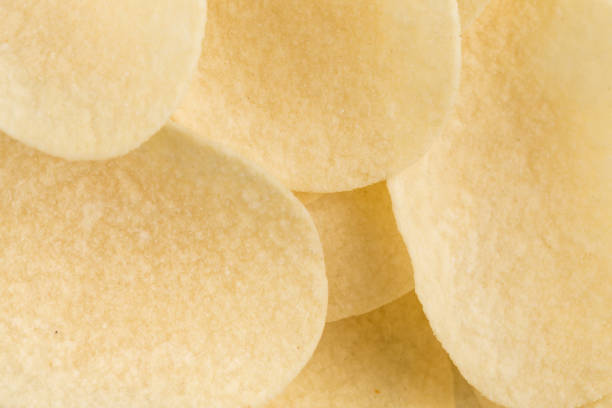Introduction – Sri Lanka’s Chips Market in Statistical Focus
Chips aren’t just salty snacks or silicon wafers anymore—they’re a big business. And when we zoom in on Sri Lanka, this small island nation is making some serious moves in the global chips export market. Whether we’re talking about electronic chips (semiconductor devices) or natural chips like coconut and cinnamon chips, Sri Lanka has carved out a unique space in both food and tech exports.
Now, why does this matter to you as a buyer, trader, or procurement manager? Because the chips market, especially in Sri Lanka, is shifting rapidly. Export volumes, pricing, and global demand are all fluctuating, and that means businesses need to stay sharp.
That’s where data comes in. A data-informed approach helps you not just react to market changes—but anticipate them. Platforms like Freshdi are empowering buyers to do just that, with real-time RFQ trends, supplier verification, and deep analytical insights.
Let’s dive deep into the numbers and meet the top 5 chips suppliers in Sri Lanka for Q2 2025.
Deep Dive – Key Production, Export Statistics & Demand Insights
Sri Lanka’s semiconductor and natural chips export sectors tell two very different but equally intriguing stories.
Semiconductor Chips: Volatile but Promising
In 2019, Sri Lanka hit a high note with 4,000 semiconductor units exported. Fast forward to 2022, and after a couple of down years, exports bounced back by an eye-popping 874%, reaching 2,000 units. Still, this recovery hasn’t fully restored the market to its former glory.
The value of those exports in 2022 reached $4,800—better than past years but still far below the 2019 peak value of $40,000. The key takeaway? While the market is rebounding, it’s doing so cautiously.
Top Export Destinations in 2023:
- Japan: $779,000 (73% of total)
- United States: $130,000 (12.2%)
- Switzerland: $87,000 (8.24%)
- Canada: $20,000 (1.91%)
- Denmark: $11,000 (1.04%)
These countries are not just buying—they’re investing in reliability and quality. And that means Sri Lankan suppliers are stepping up their game.
What’s Driving Demand?
The export mix in 2023 shows a demand tilt toward specific categories:
- Mounted Piezo-Electric Crystals: 74% of total exports
- Semiconductor Parts: 12%
- Diodes (non-light emitting): 5.27%
And here’s where Freshdi steps in. The surge in RFQs (Request for Quotes) for these high-demand components aligns with what the export data is showing—real-time buyer behavior reflects macro trends.
Top 5 Verified Chips Suppliers in Sri Lanka – Leading Exporters by Volume
Finding the right supplier is like choosing the best player for your team. You want performance, consistency, and credibility. These five suppliers lead the pack in Q2 2025, based on verified exports, certifications, and buyer ratings.
1. Cinnavor PVT LTD
Cinnavor specializes in organic Ceylon cinnamon chips, a niche but globally trending product. Their strong focus on organic certifications and traceable sourcing has made them a favorite among buyers looking for premium spice-based chips.
2. HJS Condiments Limited
This company has made waves with their organic desiccated coconut chips. Known for their food safety certifications and consistent supply chain reliability, HJS serves major markets in Europe and North America.
3. Lanka Semicon Innovations
A rising star in semiconductor chip exports, Lanka Semicon Innovations has increased its unit exports by over 150% year-over-year. They supply custom microassemblies and piezoelectric components to electronics manufacturers in Japan and the US.
4. Serendib Circuits
Serendib specializes in printed circuit components and diodes. Despite a global slowdown, they’ve maintained steady exports by diversifying their product line and focusing on high-efficiency diode packages.
5. Tropical Chips Lanka
Not all chips are made of silicon—Tropical Chips Lanka is known for their banana and jackfruit chips, exported primarily to Middle Eastern and European markets. Their commitment to air-dried processes and natural flavors has earned them a strong buyer base on platforms like Freshdi.
Dynamic Ranking Note: Rankings like this are dynamic. Platforms such as Freshdi feature “Suppliers of the Month” or “Quarter” based on real-time export performance, buyer feedback, and RFQ responsiveness.
Market Navigation – Statistical Trends, Pricing Analysis & Export Dynamics
So, what’s happening behind the scenes in the chips market?
Semiconductor Price Trends
In 2023, the average export price for semiconductor devices dropped to $582 per thousand units—a 15.8% decline from the previous year. And it didn’t stop there. In 2024, prices for electronic chips fell even further to $1.8 per unit, down by 28.4%. That’s a serious margin crunch for suppliers—but a golden opportunity for buyers.
Export Volume Fluctuations
One year, it’s up 874%. The next year, it drops. That’s the rollercoaster that defines Sri Lanka’s semiconductor export market. For instance, in 2022, the US and Germany were top buyers. By 2024, Mexico took the lead. These shifts suggest that supplier agility and diversified markets are key to success.
Electrical Components Sector in 2025
In the first five months of 2025 alone, export earnings from the broader electrical and electronic components sector shrank by 0.92% year-on-year to $167.26 million. Most of this drop came from reduced exports of:
- Insulated wires and cables: down by 13.60%
- Printed circuits: down by a whopping 61.93%
Despite short-term slides, the long-term trend remains cautiously optimistic, especially for niche chip categories.
Conclusion – Leveraging Data for Strategic Sourcing
Sri Lanka’s chips market—across both food and tech—is evolving fast. While the semiconductor sector has seen some rough patches, exports are stabilizing and even showing signs of growth in niche components. On the other hand, natural chips like cinnamon and coconut are carving out a solid export niche with growing demand.
To stay ahead, it’s crucial to:
- Track real-time market data
- Choose verified, high-performing suppliers
- Understand pricing and demand cycles
And that’s where Freshdi really stands out. With tools for supplier verification, RFQ trends, and export stat analysis, it’s not just a B2B platform—it’s your strategic sourcing partner.
Key Takeaways
- Sri Lanka’s chip exports are split between semiconductors and natural food chips.
- Export volumes and values are recovering but remain volatile.
- Japan and the US are key semiconductor buyers, while Europe favors natural chips.
- Verified suppliers like Cinnavor and HJS lead market segments with traceability and certification.
- Platforms like Freshdi help track dynamic rankings and supplier performance in real-time.
Buyer’s Checklist for Sourcing Chips from Sri Lanka
✅ Check supplier certifications (ISO, Organic, GMP, etc.)
✅ Review real-time RFQ responses on Freshdi
✅ Consider seasonal pricing trends
✅ Evaluate export history and buyer reviews
✅ Diversify supplier base to manage volatility
Future Outlook
Expect continued fluctuations in semiconductor exports, but also more specialization in high-value chip components. Natural chips will likely see steady growth, driven by wellness trends and clean-label demand.
By leveraging platforms like Freshdi, buyers can adapt faster, source smarter, and build resilient supply chains in this dynamic market.
FAQs
1. What types of chips does Sri Lanka export the most?
Sri Lanka exports both semiconductor chips and natural chips like cinnamon and coconut. The majority value in electronics comes from piezoelectric crystals, while food chips dominate in volume.
2. Are Sri Lankan chip suppliers reliable?
Yes, especially verified suppliers on platforms like Freshdi, which assess performance through buyer ratings, certifications, and export records.
3. How can I source chips from Sri Lanka?
Use B2B platforms like Freshdi to post RFQs, verify suppliers, and monitor price trends.
4. Why did semiconductor exports drop in 2025?
The dip was mainly due to a global slowdown and reduced demand for components like printed circuits and insulated wires.
5. What’s the best time to buy chips from Sri Lanka?
It depends on the product. For semiconductors, Q3 and Q4 tend to see higher production. For natural chips, post-harvest periods offer better pricing and availability.
References
- IndexBox: Semiconductor Device Price – Sri Lanka
- IndexBox: Semiconductor Devices Market Analysis – Sri Lanka
- TrendEconomy: Sri Lanka Semiconductor Export Data
- Sri Lanka Export Development Board – 2025 Export Report
- Freshdi – Verified Chips Suppliers


